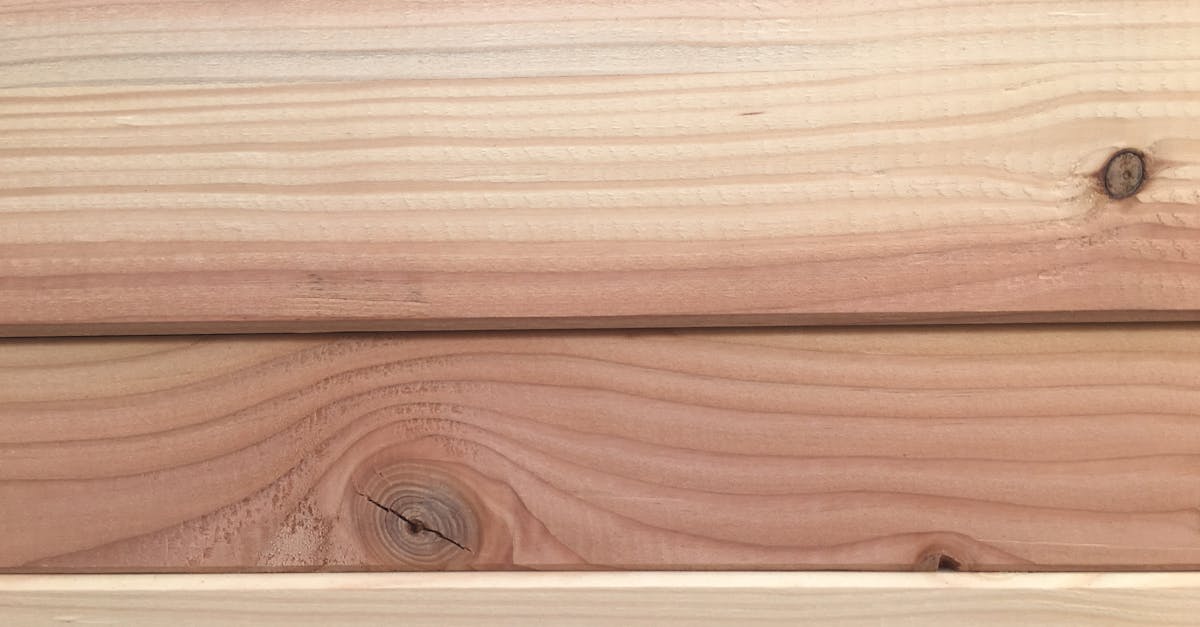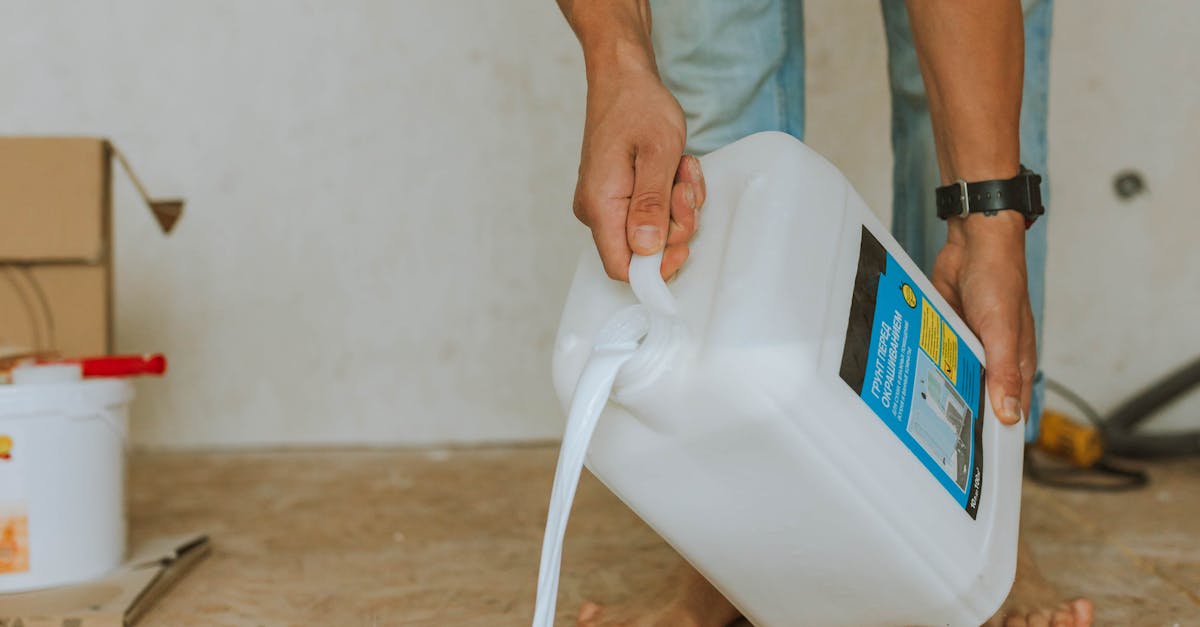
The Sanding Process
Floor sanding serves as the foundation of achieving a smooth, polished hardwood finish. The process starts with assessing the condition of your floors and determining the type of sander you'll use. Most beginners opt for a drum sander for large areas, while an orbital sander may be more user-friendly for smaller spaces. Properly preparing the area involves removing furniture and covering vents to minimize dust dispersal.
Once you have your equipment ready, it's essential to follow a systematic approach. Begin with coarser sandpaper to tackle deeper imperfections. Gradually transition to finer grits to refine the surface. Maintaining even pressure and following the grain of the wood will help prevent damage. Regularly vacuuming the dust between grits ensures a clean workspace and optimal results as you progress through the sanding process.
StepbyStep Guide to Sanding
Begin the floor sanding process by preparing your space. Remove all furniture, rugs, and any items that might obstruct your work. Ensure the area is adequately ventilated and wear safety gear, such as a dust mask and goggles. Start with repairing any damaged areas on the floor. This can include filling in gaps or holes with a wood filler that matches the existing floor color. Once repairs are complete, clean the surface to eliminate any dirt or grime.
Next, choose the appropriate sandpaper grit for your initial pass. Start with a coarser grit, typically around 36 to 40, to effectively remove the old finish and smooth out imperfections. Use a floor sander to evenly sand the entire surface, following the grain of the wood. Make sure to overlap your passes slightly to ensure uniformity. After this first round, progressively switch to finer grits, such as 80 and then 120. This step-by-step approach will help achieve a smooth, polished finish on your hardwood floors.
Edges and Corners
When it comes to floor sanding, tackling edges and corners can be a challenge. Standard sanders are often too large to fit into these tight spaces effectively. Using a detail sander or a sanding sponge can help you reach these tricky areas. These tools allow for more control, making it easier to work around baseboards and in corners without damaging surrounding surfaces.
After sanding the main areas of the floor, it's essential to pay close attention to the edges. Ensure a smooth transition by sanding these sections thoroughly, avoiding any rough patches. In addition to detail sanders, hand-sanding can be particularly useful for corners. Taking the time to address edges and corners will contribute to a more professional and polished final result in your floor sanding project.
Techniques for Reaching Difficult Areas
Reaching difficult areas when floor sanding can be challenging, but with the right techniques, you can achieve a smooth finish. Begin by using a smaller, handheld sander to tackle tight spots that larger machines cannot access. These compact sanders are designed to fit into corners and along edges, ensuring that no area is left untreated. When using a handheld sander, maintain a steady hand and take care not to apply too much pressure, as this could lead to uneven surfaces.
For even more precision, consider employing sanding pads or sanding blocks. These tools allow for better control in intricate spaces, such as around baseboards or various architectural features. Additionally, when working on stairs or irregularly shaped rooms, always prioritize safety by securing your footing and using a vacuum attachment to minimize dust. Proficiently handling these difficult areas during floor sanding will contribute to a professional-level outcome.
Cleaning Up After Sanding
After completing the floor sanding process, it is crucial to focus on thorough cleanup. Dust and debris can settle into every nook and cranny of your home. Start by removing larger pieces of wood dust and debris using a broom or a vacuum cleaner equipped with a HEPA filter. Take care to avoid spreading dust around. Following the initial sweep, ensure the vacuum covers the entire area of the floor, including corners and edges where dust tends to accumulate during floor sanding.
Once the bulk of the debris is removed, it is time for a deep clean. Mop the floor with a damp cloth or a microfiber mop to capture the fine dust particles that remain. Make sure to wring out the mop well to prevent excess water from pooling on the newly sanded surface. It's advisable to change the water regularly to ensure you're not reintroducing dust back onto the floor. Adhering to these best practices for dust removal will help prepare the hardwood for the next stage, whether it’s staining or sealing.
Best Practices for Dust Removal
After completing the floor sanding process, thorough dust removal is essential to ensure a clean and safe work environment. Begin by using a vacuum equipped with a HEPA filter, which captures fine particles that regular vacuums might miss. Focus on all surfaces, including the sanded floors, walls, and any furniture that may have accumulated dust during the sanding process.
Once you've vacuumed, it's beneficial to use a damp microfiber cloth to wipe down surfaces. This technique effectively traps any remaining dust particles without scattering them back into the air. Pay special attention to corners and crevices that might be overlooked during the initial vacuuming. Adopting these best practices for dust removal during floor sanding will enhance the final finish and promote a healthier indoor atmosphere.
FAQS
What tools do I need to sand hardwood floors?
You will need a floor sander, sandpaper in various grits (coarse, medium, and fine), a vacuum or broom for cleaning, and safety equipment like goggles and a dust mask.
How long does the sanding process take?
The duration of the sanding process can vary depending on the size of the area and the condition of the floors, but typically it can take anywhere from a few hours to a full day.
Can I rent a floor sander instead of buying one?
Yes, many hardware stores and home improvement centers offer floor sanders for rent, which is a cost-effective option for beginners.
What should I do if I encounter stubborn stains or finishes during sanding?
For stubborn stains, you may need to use a coarser sandpaper to remove the finish before switching to finer grits. Be cautious and test a small area first to avoid damaging the wood.
Is it necessary to apply a finish after sanding the floors?
Yes, applying a finish is important to protect the wood and enhance its appearance. You can choose from varnish, polyurethane, or oil finishes, depending on your preference.

